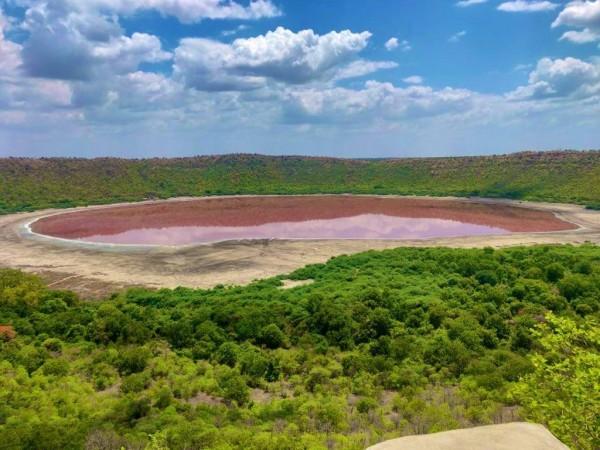One day you wake up and the lake, which is usually a nice blue, is suddenly pink. But it's not all as bad as it looks.

The colour of water in Maharashtra's Lonar lake has turned pink with experts crediting it to the salinity and presence of algae in the water body. The lake was formed after a meteorite hit the Earth some 50,000 years ago.
The lake is located around 500 km from Mumbai in Buldhana district and is a famous tourist spot and also draws scientists from all over the globe.
Of late, the variation in colour of water of the lake, having a mean diameter of 1.2 km, has not only shocked locals, but also nature lovers and explorers.
However, this is not the first time that the colour change has occurred, but this time it is more obvious, according to experts.
Salinity and algae responsible for this change?
The lake, which is a declared national geo-heritage monument, has saline water with pH of 10.5, Gajanan Kharat, member of the Lonar lake conservation and development committee, told news agency PTI.
"There are algae in the water body. The salinity and algae can be responsible for this change," he said.
"There is no oxygen below one meter of the lake's water surface. There is an example of a lake in Iran, where water becomes reddish due to increase in salinity," he noted.
The level of water in the Lonar lake is now low as related to the few past years and there is no rain to pour clean water in it, Kharat said.
"The low level of water may lead to increased salinity and change in the behaviour of algae because of atmospheric changes...this may be the reason for colour change. This is not the first time that the colour of water has changed," he said.
Dr Madan Suryavanshi, head of the geography department of Aurangabad's Dr Babasaheb Ambedkar Marathwada University, said looking at the scale of this colour change, "this can't be a human intervention".
"In case of a natural phenomenon, there are fungi which generally give a greenish colour to water most of the times. This (the current colour change) seems to be a biological change in the Lonar crater," he said.
During the lockdown phase, there may not have been any trouble to water, which led to this change, he said.
"Season-wise changes occur in water and this might be case with the Lonar lake. We can examine the change if we go there in a week...then we can say more about the change," he said.
Antarctica snow turned blood red
In another similar incident, earlier this year, an astounding set of images did the rounds on social media, which showed that Antarctica snow has turned blood red. Those viral images showed the Antarctic turning red near a former British research station due to microscopic algae that can survive in freezing temperatures.
The phenomenon happened due to the microscopic snow algae when weather conditions were favourable during Antarctica's summer months.














